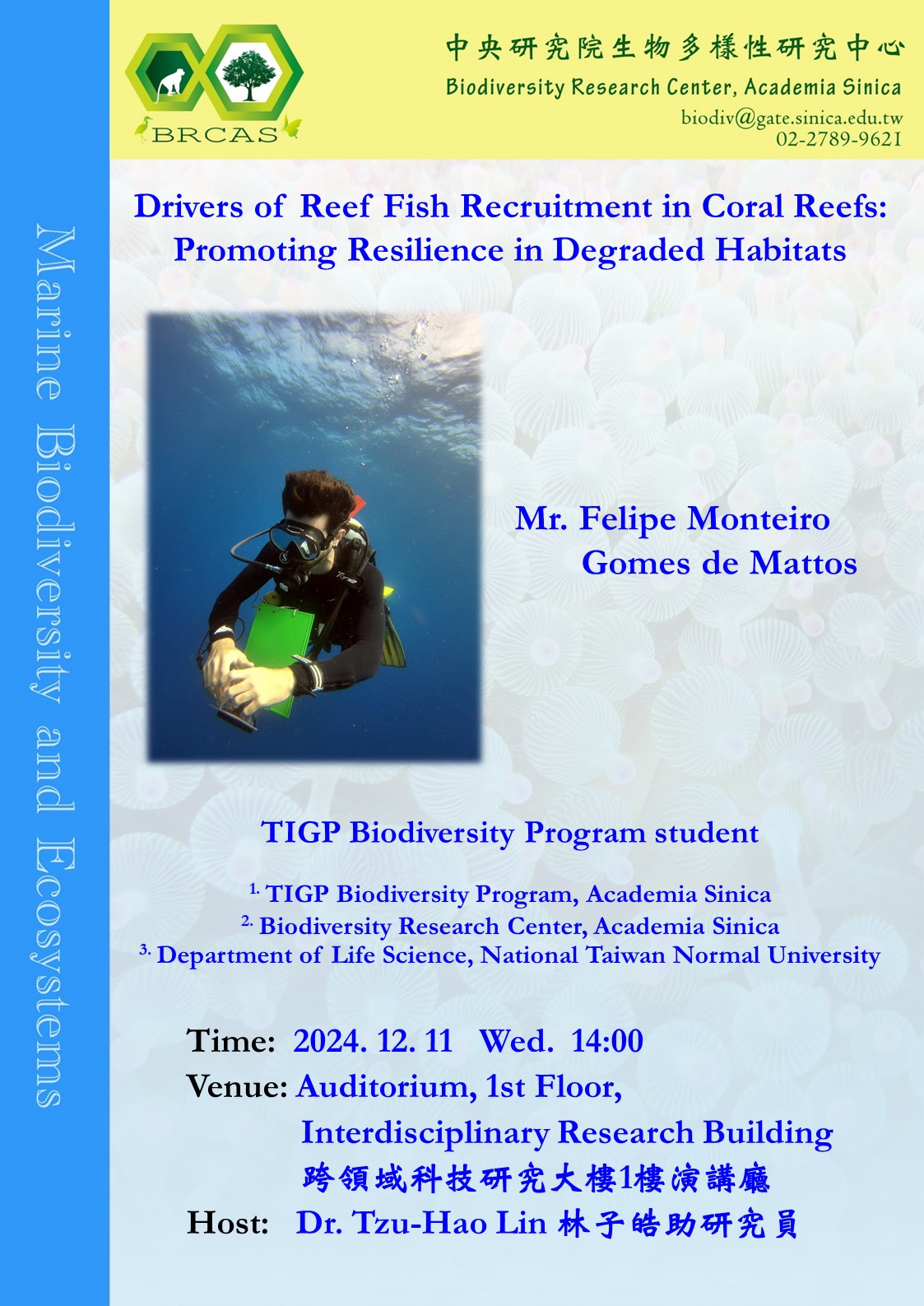- Lectures
- Biodiversity Research Center
- Location
Auditorium, 1st Floor, Interdisciplinary Research Building
- Speaker Name
Mr. Felipe Monteiro Gomes de Mattos (TIGP, Academia Sinica)
- State
Definitive
- Url
Abstract
Coral reef fish form some of the most diverse communities on Earth, yet they are under unprecedented threat due to extensive habitat loss. This scenario challenges conservation efforts and points out the importance of resilience-focused studies for reef fish assemblages. Crucial habitat factors, especially substrate complexity and live coral cover, are essential in maintaining the diversity and abundance of reef fishes. This study investigates the drivers of recruit abundance and richness, assessing the effects of the substrate cover, complexity, adult abundance, and underwater soundscape on recruit assemblages across different spatial scales and in reefs under different degradation level. We (I) investigated the effect of habitat complexity and live coral cover on a microhabitat scales through a manipulation experiment; (II) assessed which environmental drivers have stronger influence on recruitment in degraded reefs; (III) try to determine the impact of touristic vessels on the assemblage of reef fishes in a protected area. Our results reveal that on microhabitat scales, substrate complexity is more important for recruits than live coral cover due to their lack of ontogenetic filtering and their need for shelter. Similarly, on larger scales, recruit abundance and richness were positively associated with higher substrate complexity but negatively affected by a higher percentage of soft corals and algae. Furthermore, reefs with louder fish sounds on Green Island had higher recruit abundance and richness. Our results evidence that conservation efforts should focus on reefs with high complexity, even those with low coral cover, thus enhancing the potential for recovery of coral reef fish assemblages.









 Home
Home

